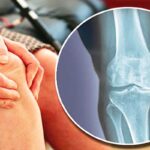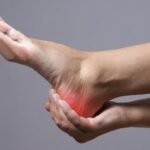
Orthopedic conditions encompass a wide array of musculoskeletal disorders, affecting bones, muscles, ligaments, tendons, and joints. Whether it’s recovering from an injury, managing chronic conditions like arthritis, or post-operative rehabilitation, physical therapy plays a pivotal role in restoring function, mobility, and quality of life for patients. In this article, we delve into the benefits and best practices of physical therapy in orthopedic treatment, shedding light on its significance in the journey towards recovery and well-being.
Understanding the Role of Physical Therapy: Physical therapy, often referred to as PT, is a rehabilitative approach that utilizes exercise, manual therapy, education, and other modalities to help individuals recover from injuries or manage chronic conditions. In orthopedic treatment, PT aims to address impairments, optimize movement patterns, alleviate pain, and enhance overall function.
Benefits of Physical Therapy in Orthopedic Treatment:
- Pain Management: One of the primary concerns in orthopedic conditions is pain. Physical therapists employ various techniques such as therapeutic exercises, manual therapy, modalities like ultrasound or electrical stimulation, and ergonomic advice to reduce pain levels effectively. Through tailored interventions, patients can experience significant relief, facilitating their engagement in rehabilitation activities.
- Restoring Function and Mobility: Orthopedic injuries or conditions often lead to limitations in mobility and functional abilities. Physical therapists design personalized treatment plans targeting specific impairments and functional goals. By incorporating exercises to improve strength, flexibility, balance, and coordination, PT helps patients regain mobility and independence in daily activities.
- Preventing Recurrence: Beyond recovery, physical therapy focuses on equipping patients with strategies to prevent future injuries or recurrences. Through education on proper body mechanics, ergonomics, and specific exercises to maintain strength and flexibility, individuals learn how to mitigate risk factors and sustain their progress long-term.
- Enhancing Surgical Outcomes: For individuals undergoing orthopedic surgery, pre-operative and post-operative physical therapy is instrumental in optimizing outcomes. Prehabilitation prepares patients physically and mentally for surgery, improving their baseline strength and mobility, which can expedite recovery post-surgery. Post-operative rehabilitation aims to minimize complications, reduce pain, restore function, and facilitate a smooth transition back to daily activities.
Best Practices in Physical Therapy for Orthopedic Treatment:
- Comprehensive Assessment: Effective physical therapy begins with a thorough assessment to identify the underlying impairments, functional limitations, and individual goals. Through objective measurements, functional tests, and patient input, physical therapists tailor treatment plans to address specific needs and optimize outcomes.
- Evidence-Based Interventions: Physical therapists employ evidence-based practices supported by scientific research to guide their interventions. This ensures that treatment approaches are not only safe and effective but also aligned with the latest advancements in orthopedic rehabilitation.
- Individualized Treatment Plans: Every patient presents with unique challenges and goals, necessitating personalized treatment plans. Physical therapists consider factors such as age, comorbidities, lifestyle, and preferences when designing interventions, ensuring that they are tailored to the individual’s needs and circumstances.
- Collaborative Approach: Physical therapy in orthopedic treatment often involves collaboration with other healthcare professionals, including orthopedic surgeons, primary care physicians, nurses, and occupational therapists. This interdisciplinary approach ensures holistic care, optimal communication, and seamless transitions throughout the patient’s journey.
Summary:
Physical therapy stands as a cornerstone in orthopedic treatment, offering a multifaceted approach to rehabilitation and recovery. From managing pain and restoring function to preventing future injuries, the benefits of PT are undeniable. By adhering to best practices and embracing a patient-centered approach, physical therapists empower individuals to overcome orthopedic challenges and achieve their highest level of well-being.




